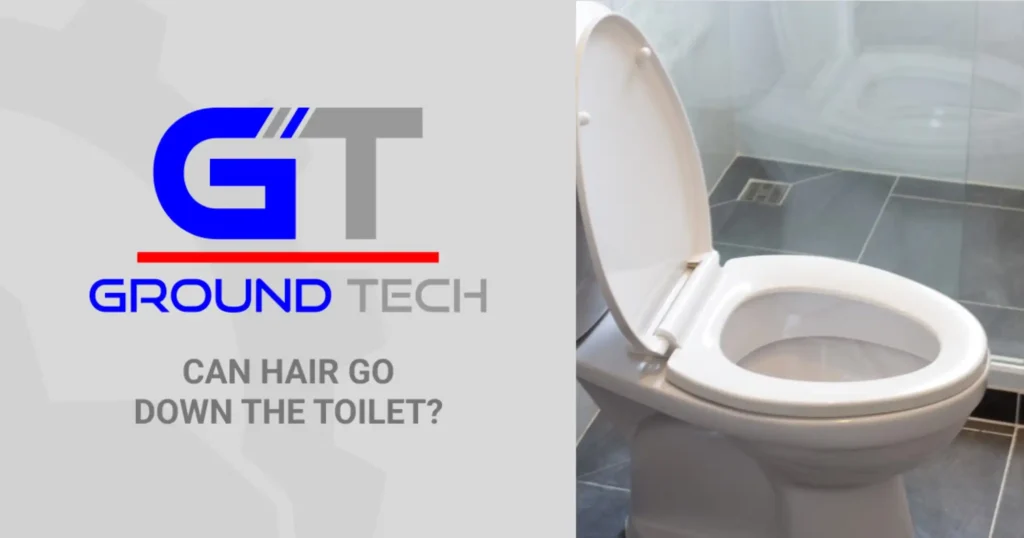
We all know the convenience of a quick flush, but when it comes to hair, that simple act can lead to bigger problems down the line. While it might seem harmless to send stray strands down the drain, hair has a sneaky way of accumulating in pipes and causing major plumbing headaches. This article will delve into the reasons why flushing hair is a bad idea, explore the consequences of doing so, and provide you with safe and effective alternatives for hair disposal.
This comprehensive guide will cover the mechanics of toilet clogs, the insidious nature of hair accumulation in pipes, the potential plumbing issues that can arise, and most importantly, how to properly dispose of hair to keep your drains flowing freely.
Toilet Clogs
Toilet clogs are a common household nuisance, often caused by a buildup of waste and debris. While solid waste is the primary culprit, hair plays a significant role in exacerbating the problem. Hair strands, though seemingly small and insignificant, have a remarkable ability to intertwine with other materials like soap scum, toothpaste residue, and even toilet paper, forming a dense, impenetrable mass that obstructs water flow. This blockage can lead to a slow-draining toilet, overflowing bowl, or complete stoppage, leaving you with a messy and unsanitary situation.
The severity of a hair-induced clog depends on several factors, including the amount of hair flushed, the diameter of your pipes, and the frequency of flushing. Over time, even small amounts of hair can accumulate and contribute to a significant blockage. Regularly flushing hair down the toilet increases the likelihood of encountering a stubborn clog that requires professional intervention.
Hair Accumulation in Pipes
Hair doesn’t simply disappear down the drain; it clings to the inside walls of your pipes, gradually forming a slimy, fibrous layer. This buildup can restrict water flow and create an environment conducive to bacterial growth. As more hair accumulates, the blockage intensifies, leading to slower draining sinks, showers, and even toilets.
The accumulation of hair in pipes is a gradual process that often goes unnoticed until it becomes a major problem. However, there are telltale signs to watch out for, such as slow-draining fixtures, gurgling sounds coming from your pipes, or foul odors emanating from drains. These symptoms indicate that hair buildup is likely occurring and should be addressed promptly to prevent further complications.
Plumbing Issues
The consequences of flushing is it okay to flush hair down the toilet can extend far beyond a simple clogged drain. Hair accumulation in pipes can lead to a cascade of plumbing issues, including:
- Sewage Backups: When hair clogs your main sewer line, sewage can back up into your home through drains and toilets, creating a hazardous and unsanitary situation.
Pipe Damage: The constant buildup of hair can put pressure on pipe walls, leading to cracks and leaks over time. This damage can be costly to repair and may require extensive plumbing work.
Increased Water Bills: Hair blockages restrict water flow, forcing your plumbing system to work harder to deliver water throughout your home. This increased effort can lead to higher water bills.
Proper Hair Disposal
Fortunately, there are simple and effective ways to dispose of hair without contributing to plumbing problems:
- Trash Can: The most straightforward method is to collect hair in a designated container or trash bag and dispose of it in the garbage.
Hair Catcher: Install a hair catcher in your shower drain to trap loose strands before they can enter the pipes. These devices are readily available at most hardware stores and are easy to clean and maintain.
Compost Bin: If you have a compost bin, you can add hair to it as a natural fertilizer. Hair decomposes relatively quickly and adds valuable nutrients to your compost pile.
Avoid Flushing Hair
While the temptation to flush hair down the toilet may seem convenient, it’s crucial to remember the potential consequences. Does hair clog the toilet? Absolutely! By avoiding this practice, you can protect your plumbing system from damage, prevent costly repairs, and maintain a clean and sanitary environment in your home.
Conclusion
Flushing hair down the toilet is a common misconception that can lead to significant plumbing problems. Hair accumulates in pipes, forming blockages that restrict water flow and create breeding grounds for bacteria. To avoid these issues, it’s essential to dispose of hair properly in the trash, use a hair catcher, or add it to your compost bin. By making this simple change, you can protect your plumbing system and ensure smooth-flowing drains for years to come.
